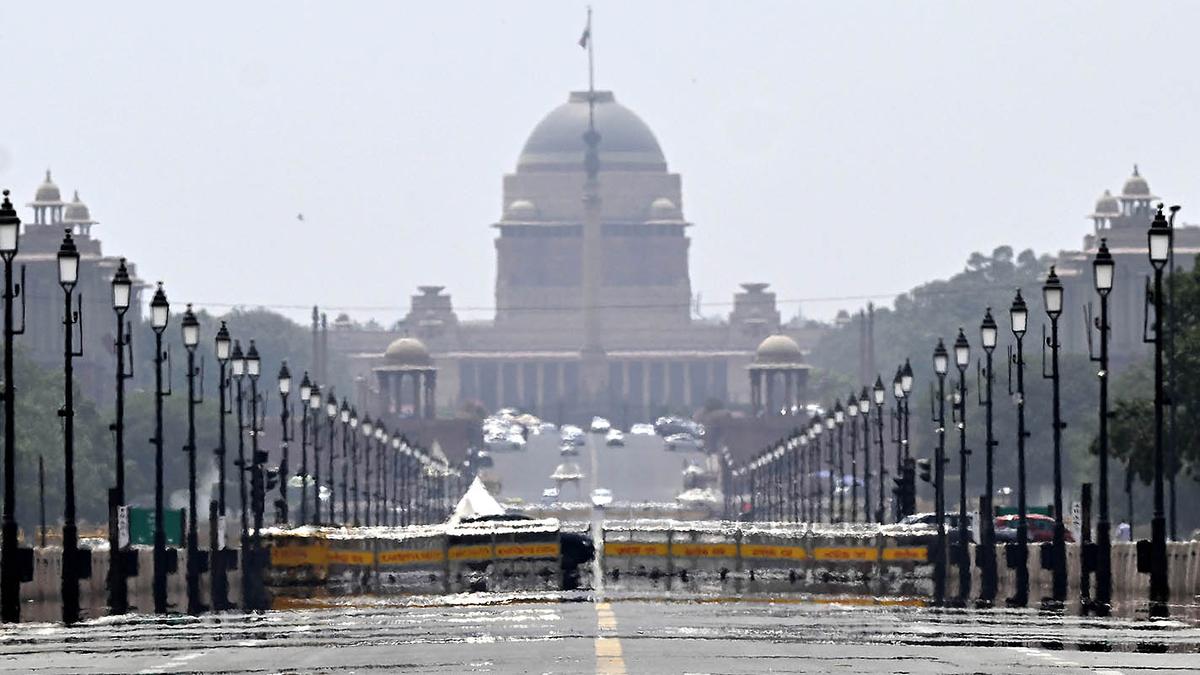
‘Record-breaking’ Delhi temperature could have been due to a faulty instrument
The Hindu
Unprecedented 52.9° Celsius temperature in Delhi likely due to faulty instrument, not weather; IMD investigating.
The unprecedented temperature of 52.9° Celsius reported in Delhi on May 29 is likely to have been due to a reading from a faulty instrument, and not a weather phenomenon. The India Meteorological Department (IMD) is conducting an investigation into the matter, The Hindu has learnt from conversations with multiple senior officials in the department.
With Delhi and several parts of north India reeling under an intense heatwave, Wednesday’s reading suggested that Delhi had broken a temperature ceiling that hadn’t even been breached in western Rajasthan, which is usually a region of recording-breaking temperatures in India.
The reading reported out of a single station in Delhi’s Mungeshpur was a large three degree rise from that of the previous day’s (May 28) reading at the station of 49.9° Celsius. Except for the weather station at another location, Narela, which reported a 1.5° C jump over the previous day, all other stations reported less than a degree of deviation.
The weather station at Mungeshpur is an automatic weather station (AWS), one of 16 such stations deployed by the agency to measure variations in temperature, humidity, and rainfall across Delhi. Deployed only since 2022, they work differently from the IMD’s five “departmental” or manually-operated weather stations that have been the official source of Delhi’s weather since decades. The manual weather stations have people reading a traditional thermometer to measure and report temperatures four times a day. The AWS, on the other hand, relies on sensors (thermistors) and generates meteorological values on demand, and the information is made available on the agency’s website on an hourly basis.
While the AWS’ are a vital cog in the modern meteorological observation network, and are extremely accurate, durable and consistent, experts say that the IMD doesn’t yet have all-round expertise on these instruments.
“It was clear that this was an outlier. If at least one or two of the 21 weather stations had reported a temperature of at least 50° [Celsius], then such a reading of 52.9° would still be considered plausible,” a senior meteorologist from the organisation told The Hindu. “While manual observations and thermometers are well understood, AWS are more complex instruments. While very accurate, they may, like any other instrument, be prone to error and go undetected for a while. This is a learning experience for us.”
A “thorough test and investigation is underway” before a final conclusion can be drawn on the Mungeshpur reading, M. Mohapatra, Director-General, IMD, told The Hindu. If the instrument at Mungeshpur was faulty, there was no indication over previous days that its readings were off, the official said.





















 Run 3 Space | Play Space Running Game
Run 3 Space | Play Space Running Game Traffic Jam 3D | Online Racing Game
Traffic Jam 3D | Online Racing Game Duck Hunt | Play Old Classic Game
Duck Hunt | Play Old Classic Game











